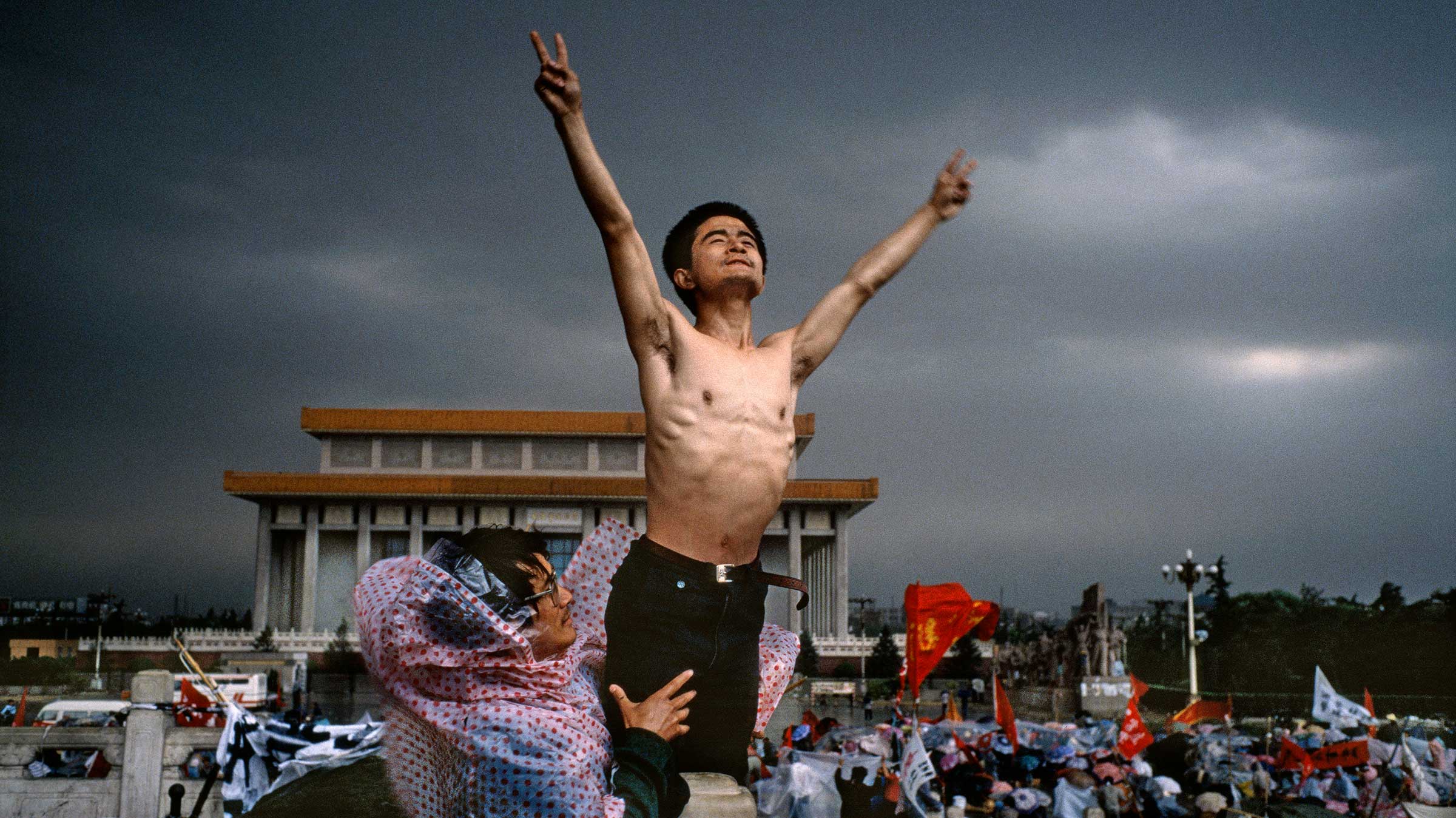In Beijing, the 30th anniversary of the student-led protests was marked with a deafening silence.
30 years ago, Beijing’s Tiananmen Square became known internationally as the site of a violent and deadly attack on student protestors. But if you went there yesterday, on the 30th anniversary of the protests, you would be none the wiser. Security guards blocked journalists from entering Tiananmen Square, put up umbrellas whenever foreign news correspondents tried to take photographs of the open parade, and conducted rigorous ID checks of all visitors. But otherwise, what happened three decades ago has been completely erased from the country’s history books, and therefore the citizens’ psyche.
I was there just days before the anniversary. China’s Communist Party had coordinated a characteristic crackdown on dissent, and there was no trace of the horrors that had unfolded at the paved open space: no commemoration of the students who lost their lives, the bloodshed after the military shutdown, or the wound it caused to China’s promise of free speech. Tiananmen Square—which translates to Gate of Heavenly Peace—still features the original imposing portrait of communist leader Mao Zedong, which was defaced in 1989, though the portrait shows no sign of having been pounded with pigment-filled eggs.
On Google Maps, Tiananmen Square is listed as the world’s largest meeting place, but in China, you can’t access Google Maps. You have to use Bing, but when I was there last week, Bing Maps wasn’t working either. Instead, the preferred search engine is Baidu—which has gained market control in the country for its compliance with Chinese censorship. Searching for details of Tiananmen Square brings up nothing more than the location of an open space in front of the former emperor’s palace.
Home to over 21 million people, Beijing is a megacity. The capital’s sprawling congestion and vast development—including shopping malls, flats, schools, and hospitals—all centers around Beijing’s political and geographical epicentre, the Forbidden City. During the Ming dynasty, this enclosed complex guarded the emperor’s palace, but the past 500 years, it has housed the government’s various offices. It’s also a tourist hotspot. Last year, over 15 million people crossed the surrounding blocked-off roads to enter its confines—after first having their passport or national ID scrutinized by a fortress of policemen.
The place is shrouded with secrecy for a very good reason. In 2017, construction over the city’s largest skyscraper, the China World Trade Centre, slowed down when government officials voiced concerns over the observation deck on the 106th floor. They suspected the Forbidden City could be seen from this viewing tower; surrounded by walls but no roof, meaning officials could potentially be watched as they walked around government headquarters. Rumour has it that the ruling communist party simply bought up the top floors, and since then, the government has issued verbal guidelines restricting the height of any potential new developments, citing population control. In comparison with Shanghai, where the horizon lights up like a scene from Blade Runner, Beijing’s softer skyline keeps its political heart safe from prying eyes.
Tiananmen Square is just a stone’s throw away from the Forbidden City. But if you clamber through the hordes of tourists to ask a guide about the iconic picture of a protestor walking up to a tank, you’ll be met with a blank expression. Over the past week, the front pages of the state-run newspapers were filled with stories on the country’s ongoing trade wars with the US. Meanwhile, other nations have been widely discussing the day China summoned the military in response to the million-plus protestors, gunning down and running over a still-undisclosed number of civilians.
But that’s the way the country operates. The great firewall of China is infamous for selectively blocking access to information—Google, Facebook, Twitter, Instagram, and the New York Times are all considered dangerous. Even the search engine Duck Duck Go and the music platform SoundCloud are considered digital persona non grata. China’s approach in this regard is often arbitrary. In 2017, it was reported that WhatsApp was blocked, but when I visited the country last week, I used the encrypted messaging service perfectly fine. No VPN, and constant connection.
That’s the thing about China’s surveillance state. Nothing about it is transparent or democratic. It doesn’t have to tell you what it does. You don’t get the opportunity to see its workings or come to grips with its methodology. Sites and services are quietly suppressed, and millions of people go about their day none the wiser about what is happening on their very own doorstep.







